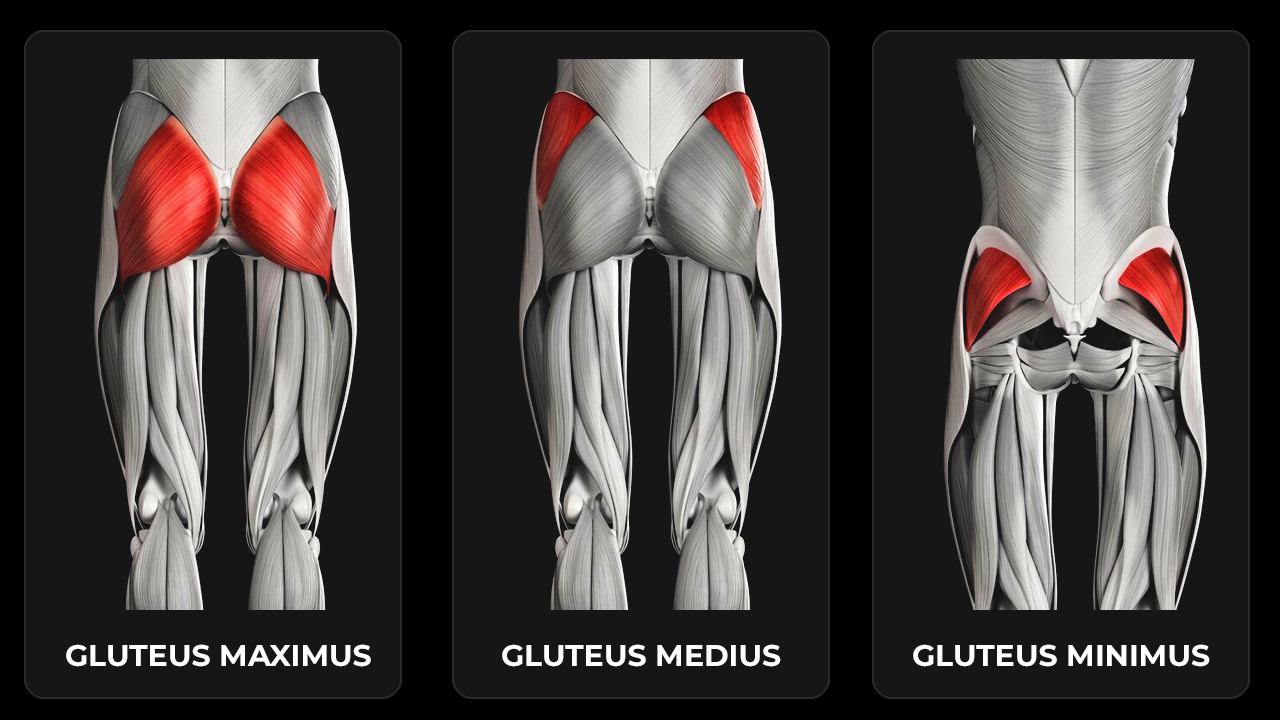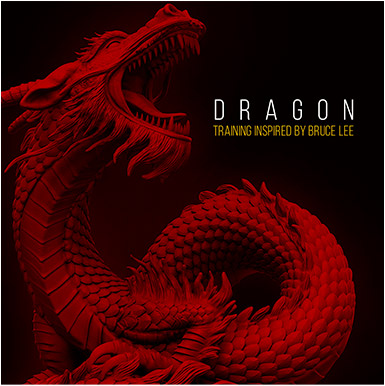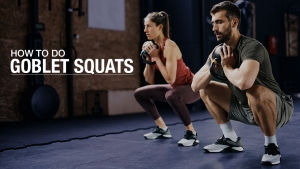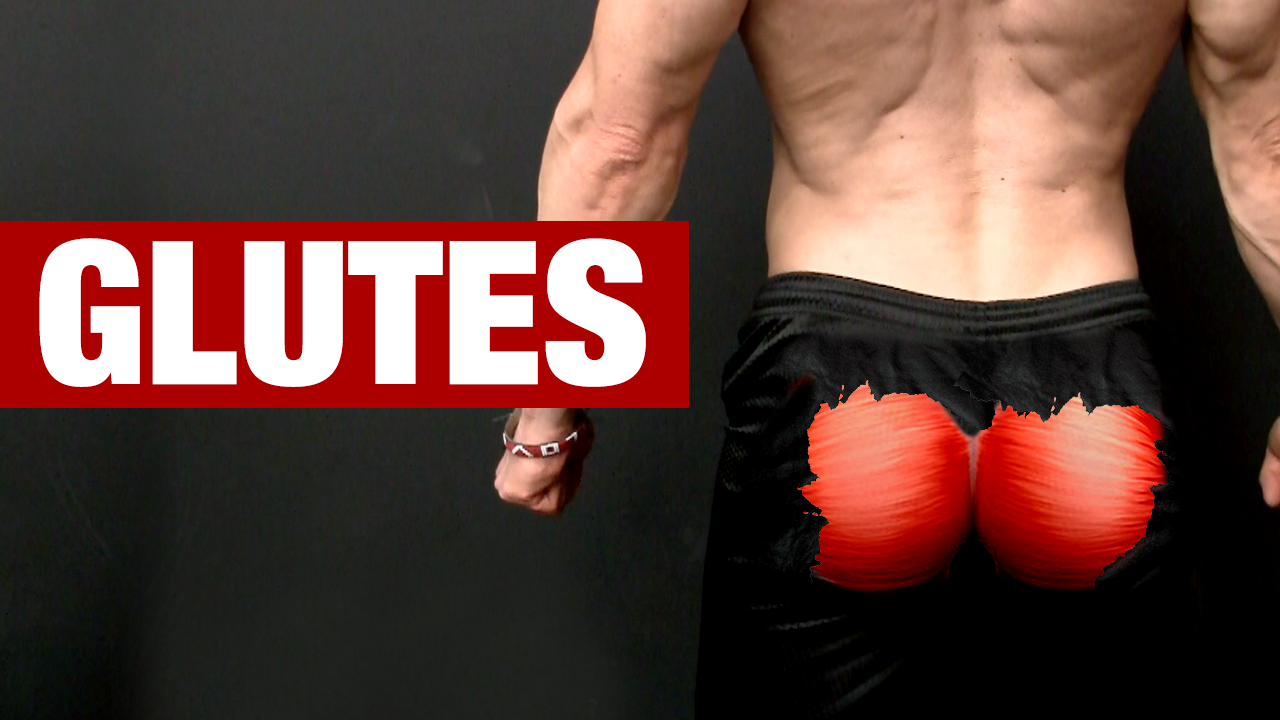
THE ULTIMATE GLUTE WORKOUT GUIDE
Most people think that if their glute exercises list includes the classic Back Squat and Traditional Deadlift, then the glutes are taken care of.
Not even close!
There is a LOT more to glute workouts than you may think.
If you’ve found your glutes are slow to develop (or not responding at all), this comprehensive guide to glute exercises is for you.
Below, I provide an overview of glute muscle anatomy to help you understand how the best glute exercises work.
Then I will give you all the glute workouts you’ll need, regardless of what type of exercise equipment you have.
Whether you’re going to a fully stocked gym, or you only have your bodyweight, I’ve got you covered.
I’ll also be addressing some frequently asked questions related to glutes and glute workouts including how to directly target the glutes, how to grow your glutes, and how often you should be training your glutes.
Here are the topics that I’ll cover in this glute training guide:
1) GLUTE MUSCLES ANATOMY
Before we dive into my top picks for glute exercises, I want to make sure you understand the anatomy of the gluteal muscles.
That includes knowing what they are, where they are, and how they help with movement.
Why bother with this when I can just give you the glute workouts?
Guys, the better you understand the glute major muscle group, the stronger your mind-to-muscle link. This means that you’ll be able to achieve better glute muscle activation.
And when there’s a high level of activation, you’ll be able to generate a more powerful contraction of the glute muscles.
This is an essential step regardless of whether you want a larger, stronger, or more sculpted butt. The glutes have the potential to be the strongest muscles in your lower posterior chain, and this strength plays a pivotal role in lots of activities in daily life as well as the gym.
Let’s take a closer look at the three distinct muscles in this muscle group: the gluteus maximus and the gluteus medius & minimus.
GLUTEUS MAXIMUS
The gluteus maximus is the largest muscle of the three glute muscles, and it’s the one you’re likely most familiar with.
Every time you say “glutes,” you’re probably thinking of this one since it’s essentially the main butt muscle.
Any time you take a seat, you’re mainly sitting on the glute max.
This muscle spans across your hip bones and is attached to the back of your pelvic bone, extending down to the top of your thigh bone. It’s the outermost muscle that gives your butt its shape.
In terms of function, the gluteus maximus is a real powerhouse.
It’s primarily responsible for moving your hips and thighs. When you move to standing position from a seated position, climb stairs, run, or do a squat, it’s your gluteus maximus doing most of the heavy lifting.
This muscle also plays a significant role in keeping an upright torso position when you walk or run, helping you maintain balance and stability.
Weak glutes mean you’re putting yourself at risk for a compromised position.
GLUTEUS MEDIUS
The gluteus medius is the second largest of the three glute muscles. It’s a bit more hidden compared to the entire glute maximus.
Think of it as the middle layer of an onion, tucked underneath the outer layer, the gluteus maximus.
It sits on the outer side of your hip, and it’s partially covered by the gluteus maximus.
To feel your gluteus medius, place your hands on your hips like you’re striking a Superman pose. You’re essentially touching the top part of this muscle.
The gluteus medius has a very important job in helping you move and stay balanced.
When you walk, run, or even just stand on one foot, it’s your gluteus medius that helps keep your pelvis stable and prevents you from toppling over.
It also plays a role in moving your leg away from your body, a movement known as hip abduction. So, if you’ve ever done a side leg raise in a workout, that’s your gluteus medius doing its thing!
GLUTEUS MINIMUS
The gluteus minimus, as its name suggests, is the smallest of the three glute muscles.
It’s quite deep-seated, lying underneath both the gluteus maximus and medius, kind of like the innermost layer of an onion.
You can’t feel it directly, but it’s located towards the side of your hip, right beneath the gluteus medius.
While it might be the smallest, don’t underestimate the gluteus minimus – it still plays a major role.
Much like its bigger counterpart, the gluteus medius, it’s responsible for stabilizing your pelvis when you’re moving. It stops you from wobbling or tilting too much when you’re walking, running, or standing on one leg.
Additionally, the gluteus minimus aids in lifting your leg to the side in a movement called hip abduction. It also helps rotate your thigh inward.
2) WHY ARE GLUTE EXERCISES IMPORTANT?
Exercises for glutes are crucial, and not just for the reason of achieving a toned and aesthetic butt.
Sure, that’s a nice bonus, but the benefits glute development run much deeper.
DAILY MOVEMENT AND EFFICIENCY
You might not realize it and most of us take it for granted but the glutes are involved in numerous everyday activities.
Whether you’re standing up from your desk, taking the stairs, or going for a casual stroll, your glutes are hard at work.
Regular exercises for glutes can make these basic tasks easier and more efficient, reducing the risk of strain and injury.
POSTURE AND BACK HEALTH
The glutes play an essential role in maintaining good posture. Again, this is something that most people tend to overlook.
For example, if someone has lower back pain, did you know that it’s usually due to weak and underdeveloped glutes?
Glutes help keep your spine in alignment, which can alleviate back pain and lessen the chances of injury.
This is particularly relevant if your lifestyle or job involves extended periods of sitting, which can lead to the weak and underactive glutes I mentioned above, potentially causing posture problems.
EXERCISE PERFORMANCE
If you’re in the gym, you need strong glutes. This is especially true if you’re performing compound lifts or more advanced workouts like sports conditioning exercises.
Strong glutes can significantly enhance your overall exercise performance, especially with the lower body muscles.
Whether you’re into aerobics, yoga, Pilates, weightlifting, or even simple jogging, a well-conditioned set of glutes can improve your strength, balance, and endurance during your workout routine.
WORKING WITH OTHER MUSCLES
Looking at the bigger picture, strengthening your glutes can contribute to your overall total body fitness.
When performed correctly, glute exercises typically work with other muscle groups such as your thighs and core, strengthening both the muscle and the neuromuscular connection.
3) WHAT ARE THE BEST GLUTE EXERCISES?
What exactly defines the “best” glute exercises?
For glute exercises to be considered for my workouts, they need to target most, if not all three of the parts of the muscle group.
That means each part of the muscle group – gluteus maximus, gluteus medius, and gluteus minimus – is activated equally and efficiently.
Here are my picks for the best glute exercises that focus on glute strength and development. And you may not need such heavy loads to get great results.
Be sure to make these a part of your lower body workout routine:
BARBELL HIP THRUST


HOW TO DO THE BARBELL HIP THRUST:
- The proper position for the hip thrust is on the floor with a bench situated right behind you and a loaded barbell resting over your legs, hands holding onto it with an overhand grip, feet under hips.
- If you’re worried about the floor, you can use a barbell with rubber bumper. Ensure the bar is rolled so that it aligns directly above your hips.
- Lean backwards against the bench, placing your shoulder blades near the upper edge of the bench.
- Begin by driving through your feet and extending your hips vertically, lifting the barbell up.
- Once your glutes are locked out, slowly reverse the motion, bringing your hips back down to return to the initial position.
- Throughout this exercise, it’s crucial to keep your weight on your heels and maintain a neutral spine to avoid straining your lower back or neck. The goal is to perform this exercise for glute growth in a slow, controlled manner, prioritizing proper form over lifting heavy weights, because using proper posture ensures less risk of injury.
WHAT MAKES IT EFFECTIVE: Barbell Hip Thrust exercises fully move hips into extension and an optimal range of motion, which is a key function of the glutes. Keep in mind that while this is a barbell-based exercise, you can also put a pair of dumbbells on your thighs and perform it the same way. You also have the option of using resistance bands to do a Glute Bridge. This is one of the best moves for glute hypertrophy, so any serious training plan should include the hip thrust or the bridge.
STEP UP


HOW TO DO THE STEP UP:
- The starting position begins with you standing tall, holding a pair of dumbbells at your side. You may want to try light dumbbells to start.
- The focus here is to preload the muscle by simply leaning forward a bit as you step up and onto an elevated surface like an aerobic step up box.
- After your steps, ensure you fully stand up onto the raised platform and extend the opposite knee forward to achieve complete hip extension.
- Maintain core stability during this exercise. If you don’t have dumbbells, you can hold a weight plate in each hand.
WHAT MAKES IT EFFECTIVE: By leaning your body forward, you prime your glutes to get working as they counteract and limit overextension of movement in the forward direction during your strides.
REVERSE HYPER

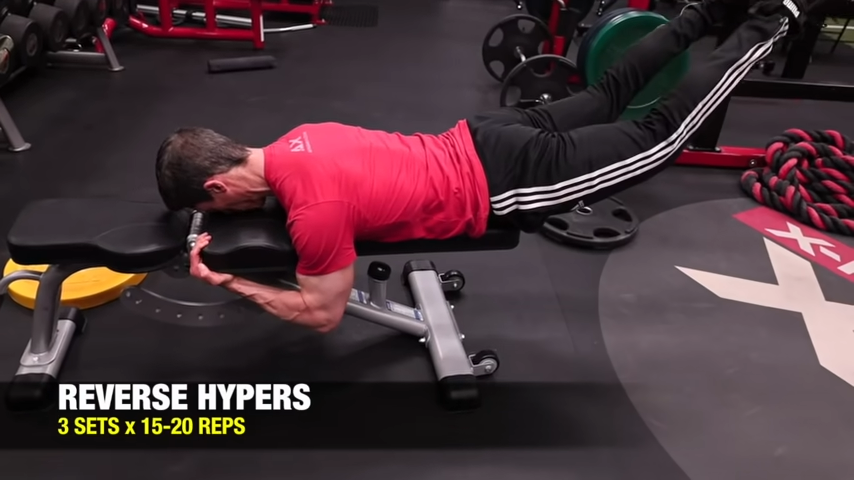
HOW TO DO THE REVERSE HYPER:
- Performing a Reverse Hyper begins with lying flat on a reverse hyperextension machine, hips aligned with the pad’s edge, gripping the handles for stability, and allowing your legs to hang off the bench.
- With slightly bent knees, lift your legs using your glutes and hips until they’re parallel to the ground or slightly above.
- The movement should be controlled, not powered by momentum, and you should keep a strong core throughout the exercise.
WHAT MAKES IT EFFECTIVE: The Reverse Hyper is effective for building powerful glutes because it involves hip extension, which is a primary function of the gluteal muscles. When performing the Reverse Hyper, you’re required to lift your legs against resistance (gravity, added weights, etc.), and this movement is achieved by extending the hips.
ROMANIAN DEADLIFT (RDL)

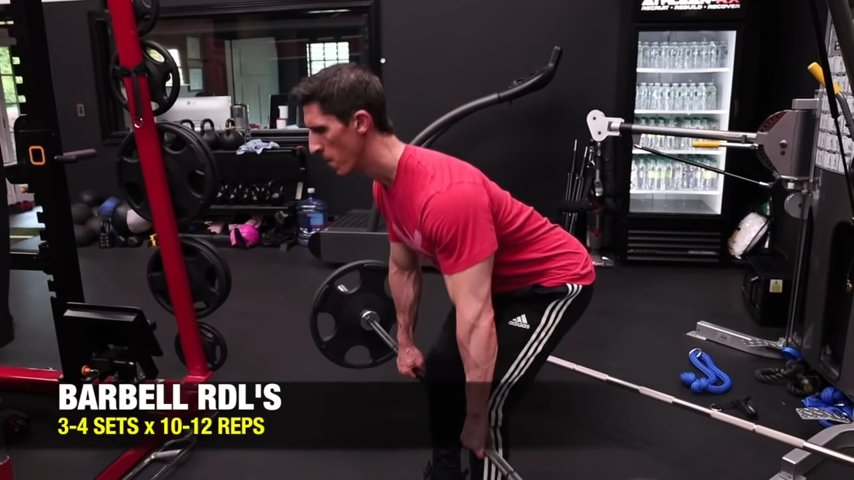
HOW TO DO THE ROMANIAN DEADLIFT:
- Starting position is standing straight feet flat with your feet hip-width apart, clutching a pair of dumbbells at the front of your thighs, with your palms directed towards your body.
- From here, keep your back straight and bend at the hips. Put a slight bend in the knees – just enough to relieve tension off them.
- Lower the pair of weights towards the floor, ensuring they remain close to your shins. Lower until you feel a stretch in your hamstrings, or the dumbbells are just above the ground, depending on your flexibility.
- Engage your glutes and hamstrings to push your hips forward and return to standing position, while lifting the dumbbells back to the starting position.
- Be sure to keep your core engaged throughout the movement to maintain a neutral position in the spine.
WHAT MAKES IT EFFECTIVE: The deadlift variation is effective for muscle gain in the glutes because it involves hip extension under load, which directly engages and strengthens the gluteal muscles.
CURTSY LUNGE

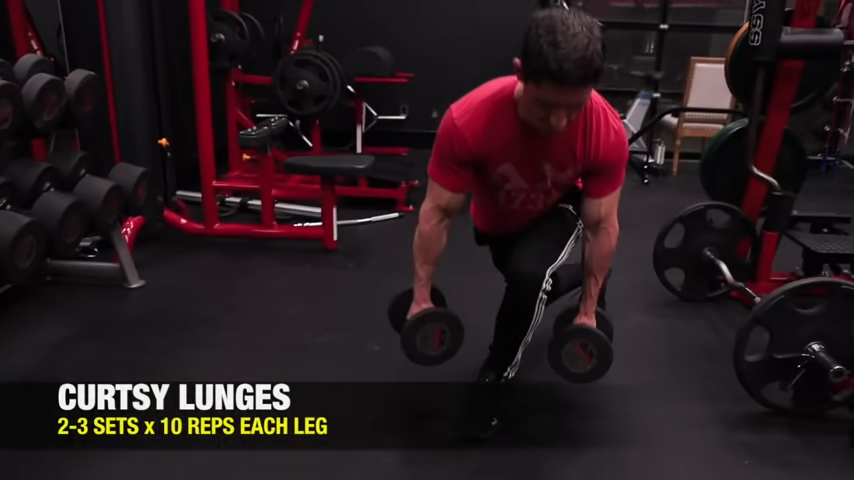
HOW TO DO THE CURTSY LUNGE:
- Curtsy Lunges, also known as Crossover Lunges, require a backward and cross-body step instead of a traditional straight-back lunge. You begin by stepping back with your left foot, crossing it behind your right foot, being mindful not to hit your left knee on the ground.
- Return to the original position and repeat on the opposite side, alternating sides.
- This movement pattern creates a balance challenge, necessitating control of the hips in the frontal plane, or side-to-side stability. Maintain core stability during this exercise.
WHAT MAKES IT EFFECTIVE: The effectiveness of this exercise for the glutes arises from the unique demand it places on the hip abductors. These muscles, which include the gluteus medius and minimus, are responsible for hip stabilization and lateral movement. The crossover motion of this lunge intensifies the engagement of these muscles, leading to well-rounded gluteal development.
SPRINTER POSITION DUMBBELL BULGARIAN SPLIT SQUATS

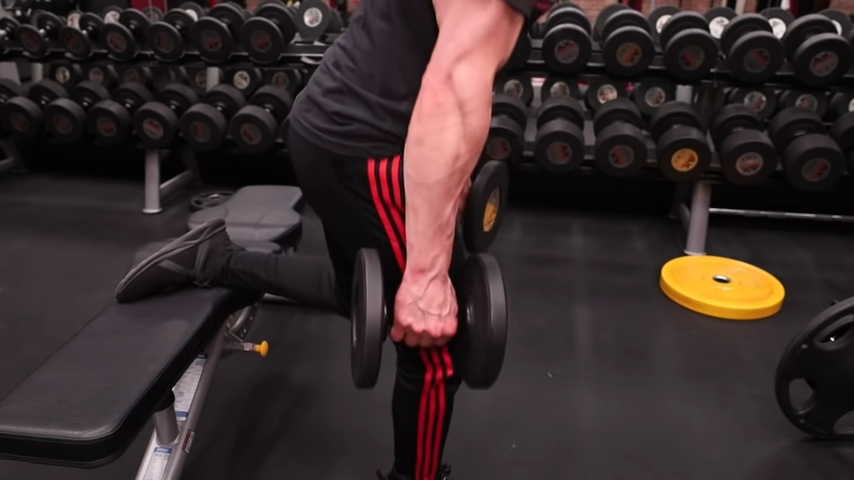
HOW TO DO SPRINTER POSITION DUMBBELL BULGARIAN SPLIT SQUATS:
- You can think of this as both a lunge variation and a classic Split Squat. It begins with holding a pair of dumbbells at your sides and standing in front of a bench or secure chair.
- Place the top of your right foot on the bench behind you and then move into a staggered split squat stance.
- Lower into a split squat, bending your left knee and leaning your torso forward into a 45-degree angle, imitating a sprinter’s position.
- Once your left thigh is parallel to the ground, pause before pushing up through your left heel to return to the start.
- Keep your torso leaning forward and maintain core stability throughout the exercise.
WHAT MAKES IT EFFECTIVE: The Sprinter Position Dumbbell Bulgarian Split Squat is a variation of the traditional Bulgarian Split Squat. The rear foot elevation in this split squat variation provides an extra challenge to your lower body routine, especially the quads and glutes. This is one of my favorite glute moves that also works great for quads and hamstrings.
SINGLE-LEG HIP THRUST

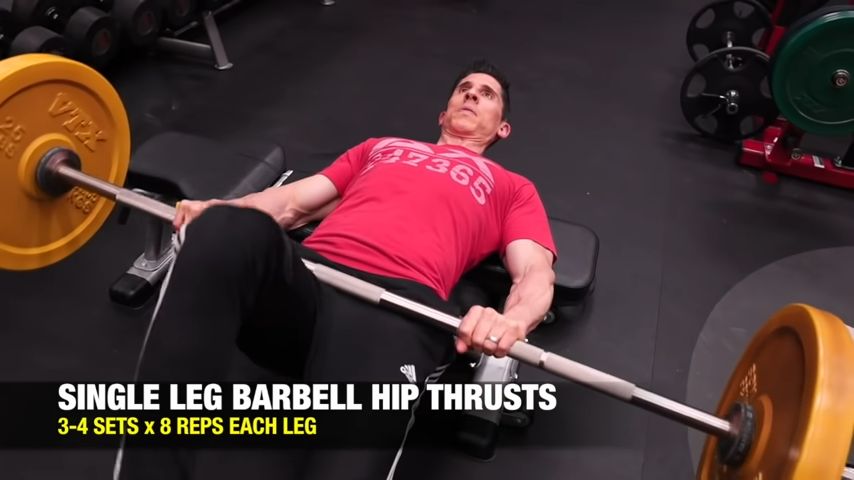
HOW TO DO THE SINGLE LEG HIP THRUST:
- Starting position is sitting on the ground with your upper back leaning against a bench, feet flat on the floor, hip-width apart, feet under hips. Extend one leg straight in front of you, which will be your resting leg.
- Drive your hips upwards by pushing through the heel of your grounded foot, aligning your extended leg with your body, creating a straight line from your shoulders to your knees at the peak of the movement.
- Squeeze your glutes at the top, hold for a second, then carefully lower your hips back down.
- Keep your core tight during the movement.
WHAT MAKES IT EFFECTIVE: The Single-Leg Hip Thrust is great for exposing muscle imbalances in your glutes.
DUMBBELL FROG PRESS

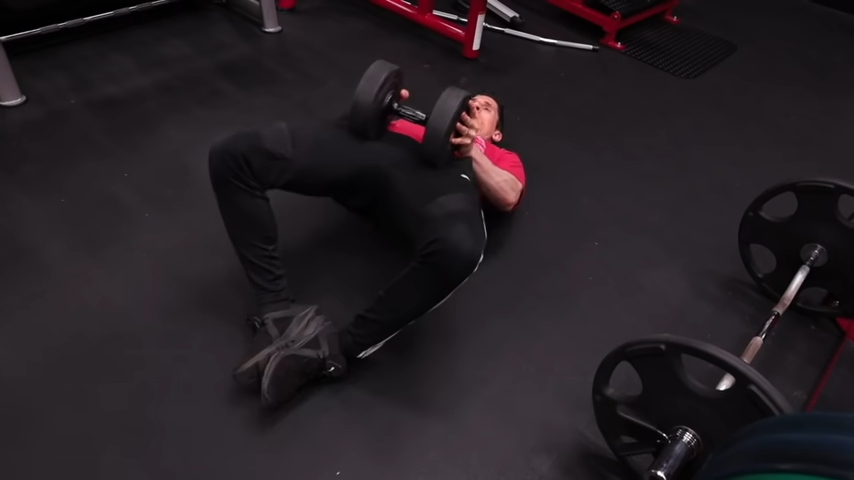
HOW TO DO THE DUMBBELL FROG PRESS:
- Position the dumbbell across your hip bones for this glute exercise.
- Focus on the feet and leg positioning, avoiding flat feet but rather leaning on the outside of your foot to create external rotation in the hips.
- Contracting the glutes, drive the hips up, making a straight line with your upper body.
- Squeeze the glutes and slowly lower to the ground.
WHAT MAKES IT EFFECTIVE: The external rotation of the hips drives the movement, engaging the glute medius.
LOW BAR SQUAT

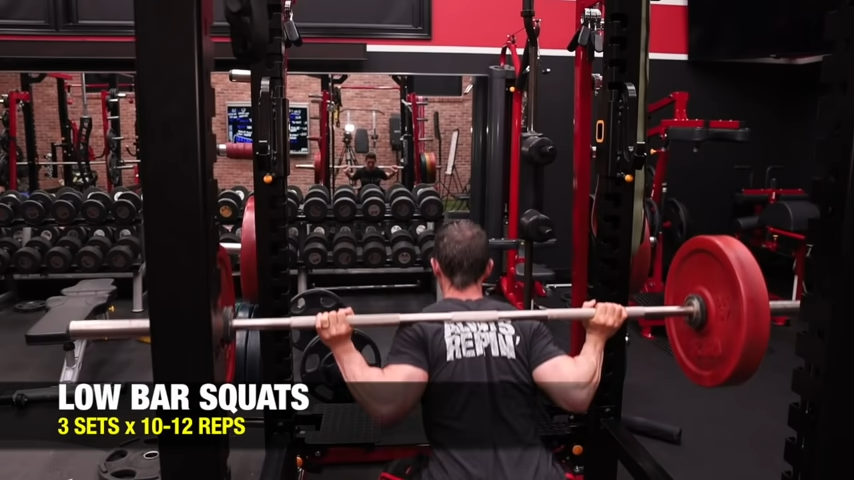
HOW TO DO THE LOW BAR SQUAT:
- The Low Bar Squat is performed by setting up the barbell below where you normally would set it on the squat rack. Grip the barbell with hands slightly wider than shoulder-width apart and standing with feet wider than shoulder-width apart.
- Initiate the squat by pushing your hips back and bending your knees, ensuring your chest is up and maintaining a neutral position in the spine.
- Lower yourself until your hips are parallel to the ground or slightly below, engaging the glutes and hamstrings.
- Drive through your heels to return to the top of the movement, ensuring full extension of your hips and knees.
- Keep the abs tight during this movement.
WHAT MAKES IT EFFECTIVE: The forward lean in this squat variation places more emphasis on the posterior chain, making it highly effective for targeting and strengthening the glutes.
4) WHAT ARE THE BEST GLUTE ACTIVATION EXERCISES?
Guys, you might have a full list of the best exercises for glutes, but that might not matter.
Why? Because of gluteal amnesia.
In other words, you’ve forgotten (or you never learned) how to engage the glutes correctly. As your personal trainer, if your glutes are weak and underdeveloped (also known as ‘dead butt syndrome’), I’d say you might need to take a step back.
Before moving forward with the exercises for glutes above, it’s crucial you know how to properly activate the glutes.
Afterall, weak and underdeveloped glutes are usually a result of improper or a lack of activation during movements like Barbell Squats.
And to properly activate the glute muscles, that requires a completely different set of butt exercises.
Here’s my go-to list of glute activation exercises to help you learn how to effectively activate this muscle group.
TOE DOWN (STAB) HIP LIFT

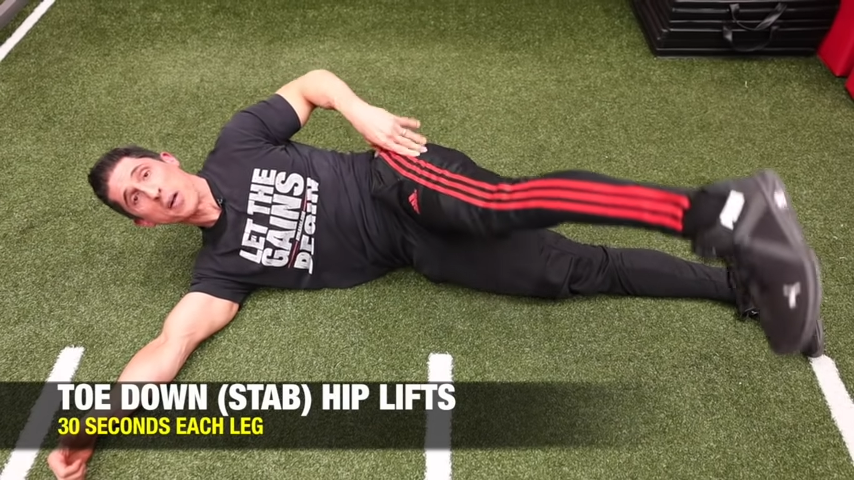
HOW TO DO THE TOE DOWN HIP LIFT:
- Begin by lying on your side on a comfortable surface. Your upper leg should be positioned in front.
- Ensure the toe of your top foot points downwards, keep a mild bend in your knee, and execute a hip lift.
- Maintain core stability during this exercise.
WHAT MAKES IT EFFECTIVE: This exercise – and the ones that follow – are considered preparatory exercises. The objective of these exercises is to stimulate the gluteus medius and hip adductors, thereby priming the glutes for upcoming compound exercises.
TOE UP HIP LIFT

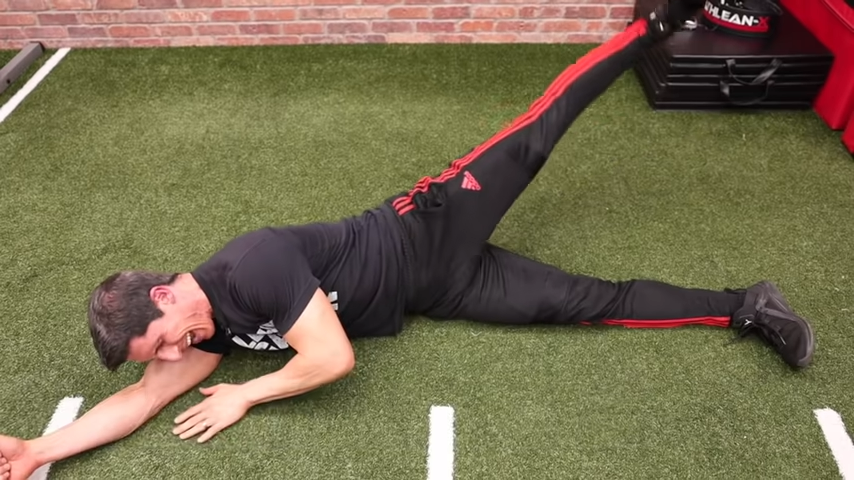
HOW TO DO THE TOE UP HIP LIST:
- For the Toe Up Hip Lift, begin by lying on your side on a comfortable surface.
- Position your top leg straight behind you, ensuring your toes point downwards, and then perform a hip lift.
WHAT MAKES IT EFFECTIVE: Just like above, this exercise fully engages the glute medius and adductors, waking up the muscles for more complicated movements.
FULL EXTENSION STEP-UPS


HOW TO DO FULL EXTENSION STEP-UPS:
- Choose a stable bench or step box and stand about a foot away, feet shoulder-width apart.
- Firmly place your right foot on the step, ensuring knee-to-foot alignment that doesn’t go past your toes.
- Use your right foot to elevate your body until standing on the box, simultaneously driving your left knee upward to waist height.
- At the lift’s peak, activate your glutes and push your hips forward into full extension. Make sure your body is straight from your head to your left heel.
- Bend your right knee to lower yourself and use your left foot to step down.
WHAT MAKES IT EFFECTIVE: This exercise is vital for activating the glutes. The conventional Step-Up movement propels the hip into complete extension, guaranteeing the engagement of the gluteal muscles.
STABILITY BALL HIP DROP AND LIFT


HOW TO DO THE STABILITY BALL HIP DROP AND LIFT:
- Start by placing a stability ball between the wall and your upper thighs. Put your right leg against it. Bend both the hip and knee at 90-degree angles.
- Let the major muscles of your left leg relax, allowing your pelvis to drop to the right, leading to a noticeable rightward and downward slant in your hips and pelvis.
- To realign your pelvis, slowly engage the glute medius of your left leg.
- Gradually contract the muscle to elevate the hips back to a leveled position.
WHAT MAKES IT EFFECTIVE: The stability ball’s resistance adds a new dimension to the workout, requiring greater effort from the glute medius.
RESISTANCE BAND HIP DROP AND LIFT

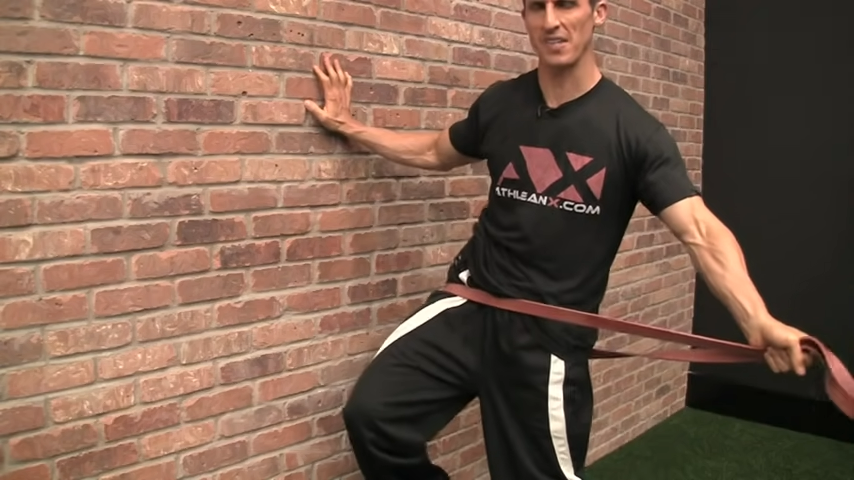
HOW TO DO THE RESISTANCE BAND HIP DROP AND LIFT:
- Place a stability ball between the wall and your upper thighs. Put your right leg against it. Secure a resistance band around thighs or hips. Bend both the hip and knee at 90-degree angles.
- Let the major muscles of your left leg relax, allowing your pelvis to drop to the right, leading to a noticeable rightward and downward slant in your hips and pelvis.
- To realign your pelvis, slowly engage the glute medius of your left leg.
- Gradually contract the muscle to elevate the hips back to a leveled position.
- Apply force against the band while lowering and raising your hip.
WHAT MAKES IT EFFECTIVE: This advanced variation, which significantly challenges the glute medius, is an exceptionally effective exercise for targeting the glutes.
5) WHAT EXERCISES GROW THE GLUTES?
Now that you know how to properly activate each part of the glutes, you might be asking yourself, “How do I achieve muscle growth in my glutes?”
If your goal is to get a bigger butt with glute building movements, I have just the thing.
Here are my favorite butt exercises:
RESISTANCE BAND KICKBACK

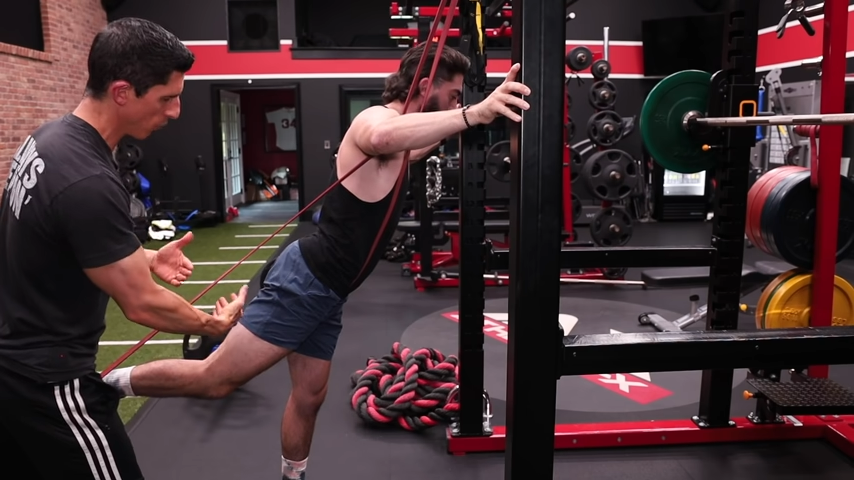
HOW TO DO THE RESISTANCE BAND KICKBACK:
- Start this exercise by placing your foot in a band looped over a pull-up bar or cable machine. From a standing position, elevate your hip maximally for optimal hip flexion and glute engagement.
- Push down against the band, extending it behind you. At the movement’s peak, push the band behind while lifting your leg against gravity to activate the glute muscles.
- Keep your toes pointing downward for isolated hip extension.
- If you want strong glutes on top of a bigger butt, incorporate this into your routine, progressively using thicker resistance bands.
WHAT MAKES IT EFFECTIVE: This exercise covers aggressive hip extension – a range from 110 to 130 degrees. It also places significant constant tension on the glute max. Unlike a squat, which activates the quads and can inhibit glute activation, this exercise focuses solely on the glutes.
WALL SINGLE-LEG GLUTE BRIDGE

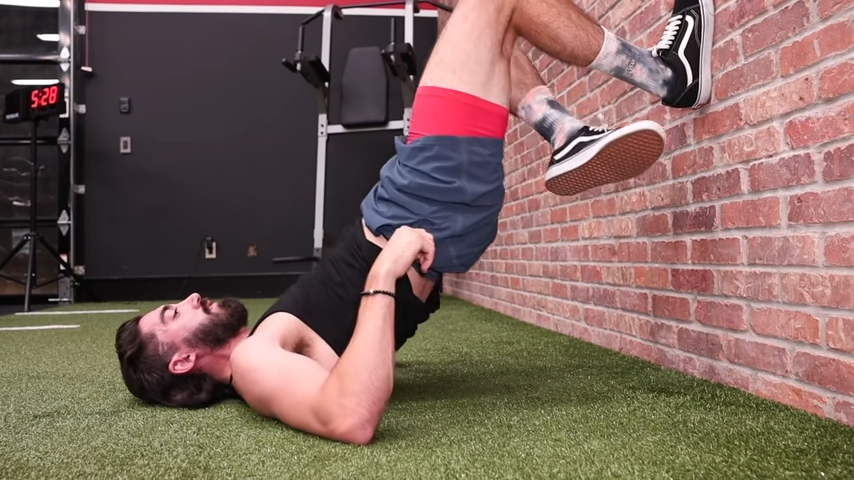
HOW TO DO THE WALL SINGLE-LEG GLUTE BRIDGE:
- Start by lying on your back with knees bent and feet against a wall.
- Fold the non-working leg down, being mindful of your ankle, and get the shin close to the wall to increase hip flexion.
- Push through the entire sole of the working foot flat against the wall, focusing on gluteus maximus activation.
- Slowly lift into a bridge position, holding for a couple of seconds with the upper body grounded, then lower and repeat.
- Prioritize strong, aggressive glute contraction over rep count. If you want to make the movement more difficult, consider using ankle weights.
WHAT MAKES IT EFFECTIVE: The extended contraction at the top of the movement is ideal for maximizing muscular tension in the glutes and getting that butt to grow.
6) HOW TO DO GLUTE EXERCISES AT HOME
What if you don’t have access to a gym? Can you still build impressive glutes without any equipment?
Of course!
There are many great bodyweight glute exercises to choose from.
And these exercises aren’t limited to the glute max-focused moves like the Bodyweight Squat or quad-dominant movements like the Lateral Lunge.
Here are my recommendations for creative glute exercises at home.
SLICK FLOOR BRIDGE CURL

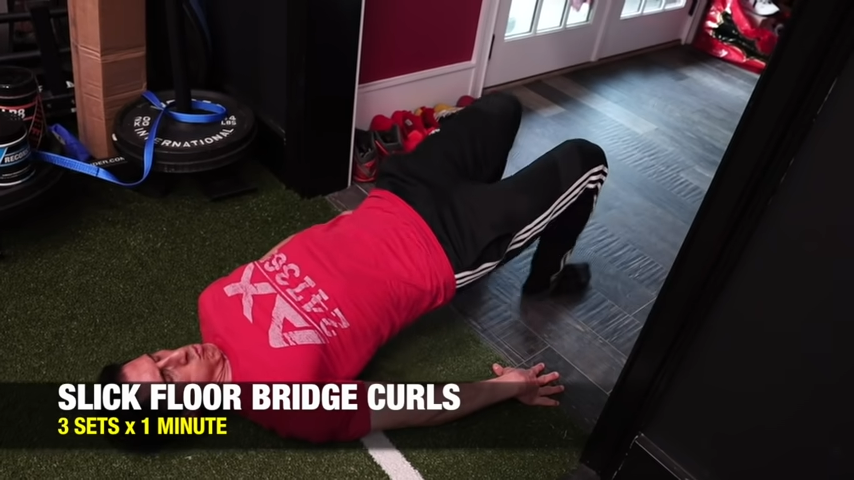
HOW TO DO THE SLICK FLOOR BRIDGE CURL:
- For a simple yet effective exercise using just your body weight, grab some socks and find a smooth floor. Begin by standing with your feet shoulder-width apart and then elevate into a high Glute Bridge position.
- As you maintain core stability, gradually let your feet slide away from you, extending the hamstrings and straightening the knees.
- It’s crucial to keep your position elevated to prevent knee crashes, and you might find it easier if you keep your feet flat on the floor.
WHAT MAKES IT EFFECTIVE: Using your own body weight and a slow tempo, you will force the glutes to react, maximizing an intense contraction. This is my favorite exercise for a bodyweight glute workout.
HIP DROP AND LIFT

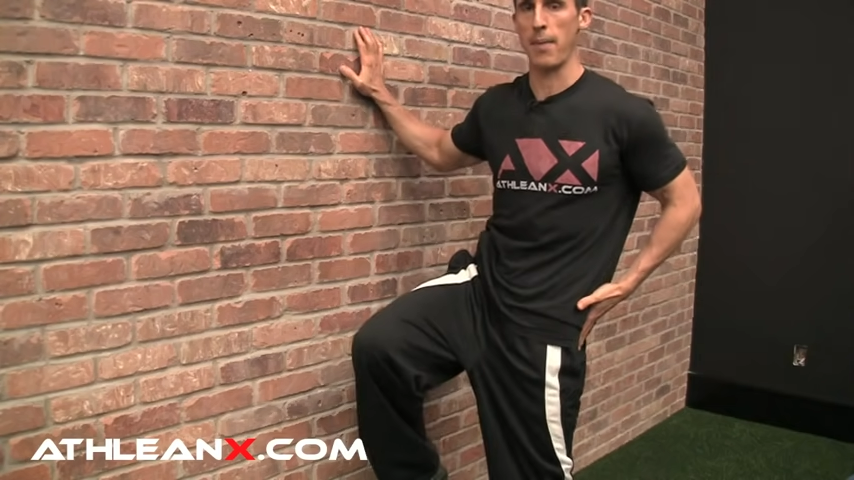
HOW TO DO THE HIP DROP AND LIFT:
- Stand next to a wall and lift the leg closest to it, making a right angle with both your hip and knee.
- Relax the muscles in that lifted leg, letting your hip area tilt down and to the side.
- Now, to straighten your hips, slowly tighten the muscle in the upper part of your lifted leg.
- When you do this right, you should feel a strong squeeze in the buttock of your lifted leg.
WHAT MAKES IT EFFECTIVE: This is one of my favorite exercises to really wake up the glutes. It specifically targets the glute medius, helping your body for balance and hip stabilization.
PRONE FROG CURL


HOW TO DO THE PRONE FROG CURL:
- Lay face down and lift your thighs off the ground to work those buttock muscles.
- While in this position, bend your knees, bringing your feet towards your rear end.
- You’ll feel a tightening sensation in the side of your buttock and around your hip area. It might burn but try to keep those hips lifted even when you’re moving your feet closer to your butt.
WHAT MAKES IT EFFECTIVE: The heels touching each other combined with the bend in the knees will help to target the glute medius, one of the most overlooked parts of the muscle group.
INTERNAL ROTATION HIP LIFT

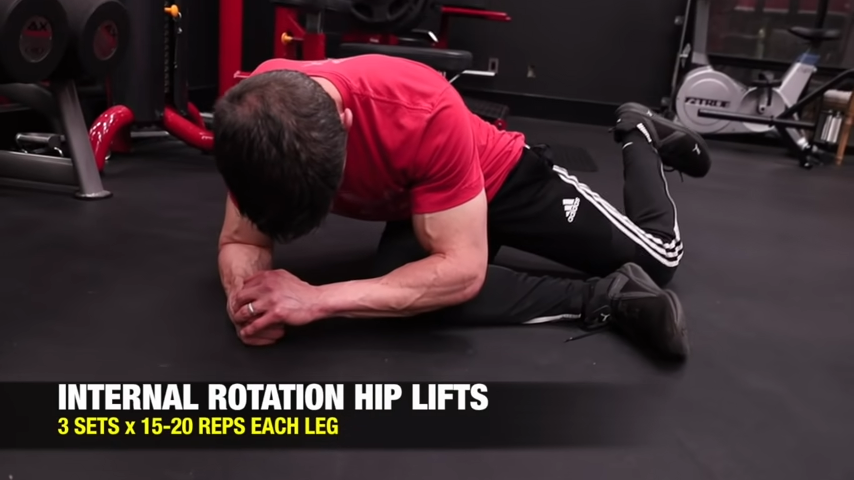
HOW TO DO THE INTERNAL ROTATION HIP LIFT:
- Many find this exercise a bit tricky because it uses a muscle movement we’re not often strong in. Start by bending your back leg like you’re making an “L”.
- Then, lean onto your front leg and try to lift your hip off the ground.
- Return to the starting position and repeat.
WHAT MAKES IT EFFECTIVE: You’re targeting two of the three glute muscles – the glute medius and glute minimus – with this one exercise.
FIRE HYDRANT

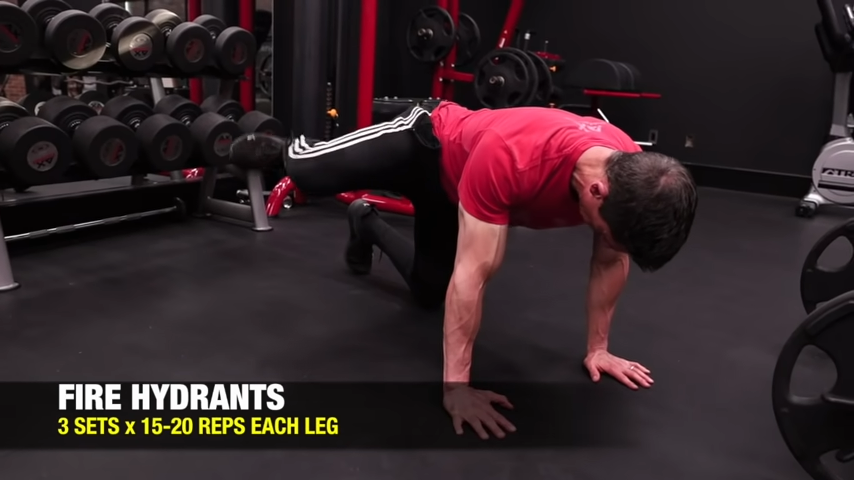
HOW TO DO THE FIRE HYDRANT:
- You might recognize this move, but I’ve got a little twist to improve it. Picture a dog lifting its leg by a fire hydrant – that’s the idea! Start on your hands and knees, in tabletop position, feet under hips.
- Then, turn your hip out and kick your leg back, keeping it turned.
- If you’re doing it right, you’ll feel a good squeeze on the side of your buttock.
WHAT MAKES IT EFFECTIVE: Noticing a trend here? This movement is going to be exactly what the glute medius and glute minimus are looking for. Push through the burn!
This guide has everything you need to up your butt workout game, from beginners to gym pros. No matter your goals or what gear you have, this is your go-to list.
But here’s the deal: working on your butt isn’t just about squats. To really make those muscles pop, you’ve got to mix it up and push past the usual exercises.
Give the workouts in this guide a shot, and you’ll soon see some impressive changes.
And if you want a complete workout for your whole body that boosts muscle and strength, check out our ATHLEAN-X programs. We’ve got something just right for everyone, no matter what you’re aiming for or the tools you have.
GLUTE EXERCISES FAQ
Glute exercises make the muscles in your butt - the big one (gluteus maximus), and the two smaller ones (gluteus medius and minimus) - stronger and firmer.
Doing these glute building movements can make your legs stronger, give you stronger glutes, help you perform better in sports or physical activities, and make you stand or sit up straighter.
Plus, a tight, toned butt can make you look better in (and out of) your clothes.
If you want to build stronger and more performance-driven glutes, I’d recommend the following for a well-rounded routine:
- Barbell Hip Thrust
- Step Up
- Reverse Hyper
- Romanian Deadlift
- Curtsy Lunge
- Sprinter Position Dumbbell Bulgarian Split Squats
- Single-Leg Hip Thrust
- Dumbbell Frog Press
- Low Bar Squat
But if your goal is to grow your glutes, making them bigger, I’d say to stick with the Resistance Bands Kickback and Wall Single-Leg Glute Bridge.
Since a glute workout will be just one part of your lower body workout, it’ll last between 20 and 30 minutes.
Naturally, this will depend on how much focus you’re putting on the glutes and which exercises you choose.
For example, while you might do Barbell Squats for your quads, you’re also working your glutes, which will contribute to the total workout time for that muscle group.
The typical number of glute exercises per workout can range between 3 to 6, depending on your fitness level and specific goals.
As mentioned above, it also depends on whether you’re performing compound lifts that also activate the glutes.
Each exercise should be performed in multiple sets with focused reps for optimal muscle activation and growth.
A good training volume for glute-specific training would be 1-2 times per week.
The best exercises for inactive glutes include the following:
- Toe Down (Stab) Hip Lift
- Toe Up Hip Lift
- Full Extension Step-Ups
- Stability Ball Hip Drop and Lift
- Resistance Band Hip Drop and Lift
These athletic movements can activate and strengthen your glutes without needing advanced fitness levels or heavy weights.
However, consistency is key for effective results, so make sure to include them in your regular routine.
It's recommended to give your muscles time to recover for optimal growth, which might mean a good training volume for glute-specific training would be every other day or two-to-three times a week. That means giving yourself a 24- to 48-hour rest period.
Remember, variety in exercises and intensity is also important to avoid overuse injuries and to promote overall muscle health.
Listen to your body and adjust your workout schedule as needed. And, of course, don’t forget about your rest days and proper nutrition.
The best glute workout typically includes a variety of exercises that target all three glute muscles – gluteus maximus, gluteus medius, and gluteus minimus.
If you’re still trying to learn how to activate your glutes properly, I’d say start your lower body workouts with exercises like the Toe Down (Stab) Hip Lift and Stability Ball Hip Drop and Lift.
If you already know how to properly activate the glutes, here are the exercises I’d recommend:
The best glute exercises should target all three sections of the total gluteal muscle group.
Here are some exercises you can incorporate into your next lower body workout to target the glutes and surrounding muscle groups:
- Sprinter Position Dumbbell Bulgarian Split Squats
- Dumbbell Frog Press
- Low Bar Squat
- Barbell Hip Thrust
- Single-Leg Hip Thrust
- Romanian Deadlift
- Step Up
- Reverse Hyper
- Curtsy Lunge
If you want to grow your glutes and get a fuller, rounder butt, be sure to incorporate Resistance Bands Kickbacks and Wall Single-Leg Glute Bridges.
For the Kickbacks, place your foot in a band over a pull-up bar, lift your hip, and push against the band, extending your leg behind while keeping your toes down. Gradually use thicker bands to increase resistance.
To perform the Wall Glute Bridges, lie on your back with one shin close to a wall and push the other foot flat against it to lift into a bridge, emphasizing glute activation. Focus on quality lifts over quantity.
Activating your glutes before a workout is essential to ensure proper and total muscular contractions throughout the session.
Here are some exercises you can perform before your lower body session to ensure the glutes are fired up and ready to go:
REFERENCES

Jeff Cavaliere M.S.P.T, CSCS
Jeff Cavaliere is a Physical Therapist, Strength Coach and creator of the ATHLEAN-X Training Programs and ATHLEAN-Rx Supplements. He has a Masters in Physical Therapy (MSPT) and has worked as Head Physical Therapist for the New York Mets, as well as training many elite professional athletes in Major League Baseball, NFL, MMA and professional wrestling. His programs produce “next level” achievements in muscle size, strength and performance for professional athletes and anyone looking to build a muscular athletic physique.
















